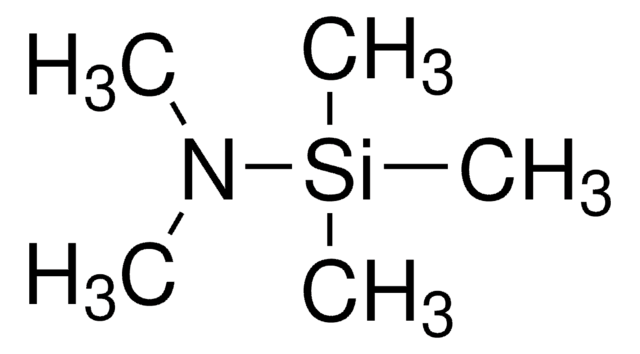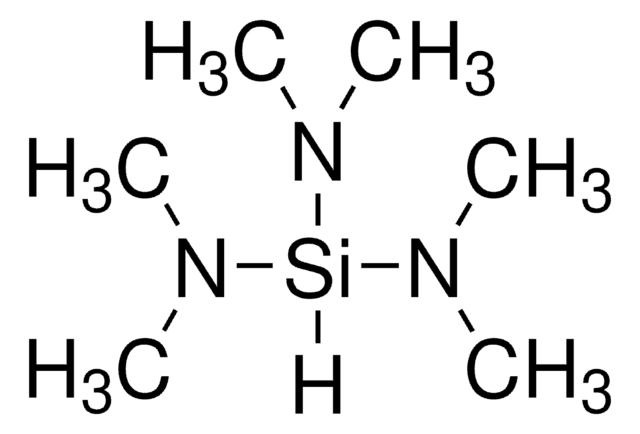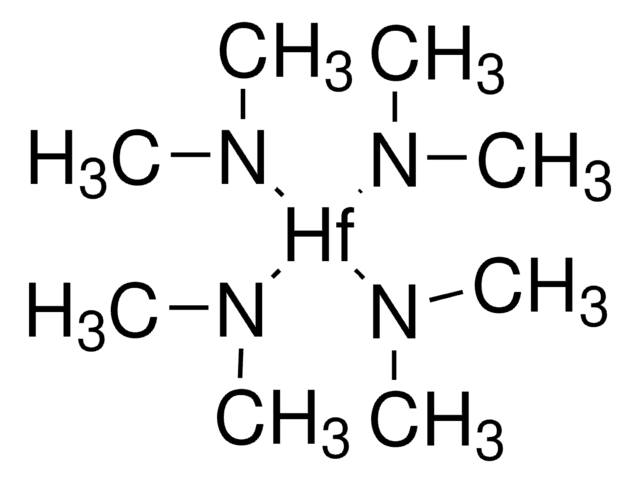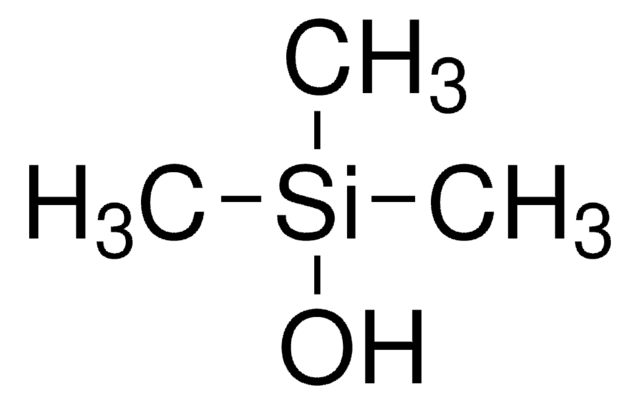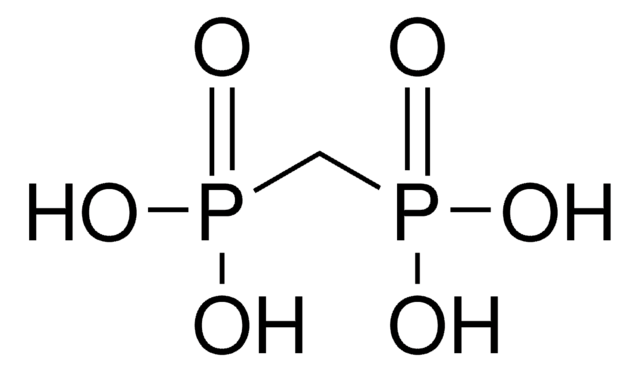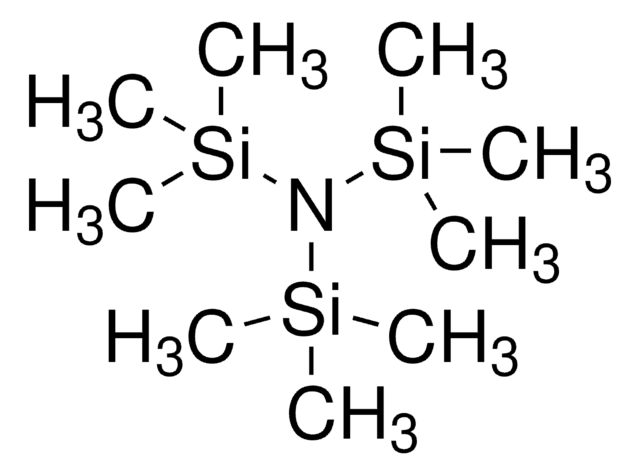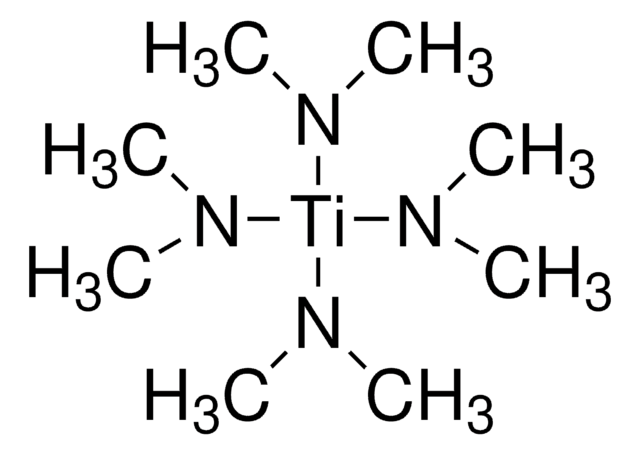570133
Tris(dimethylamino)silane
electronic grade, 99.999%
Synonym(s):
(Me2N)3SiH, N,N,N′,N′,N′′,N′′-Hexamethylsilanetriamine, TDMAS, Tris(dimethylamido)silane
About This Item
Recommended Products
grade
electronic grade
Quality Level
description
570133
Assay
99.999%
reaction suitability
reagent type: reductant
bp
142 °C (lit.)
mp
−90 °C (lit.)
density
0.838 g/mL at 25 °C (lit.)
functional group
amine
SMILES string
CN(C)[SiH](N(C)C)N(C)C
InChI
1S/C6H19N3Si/c1-7(2)10(8(3)4)9(5)6/h10H,1-6H3
InChI key
TWVSWDVJBJKDAA-UHFFFAOYSA-N
Looking for similar products? Visit Product Comparison Guide
Related Categories
General description
Signal Word
Danger
Hazard Statements
Precautionary Statements
Hazard Classifications
Acute Tox. 3 Dermal - Acute Tox. 3 Inhalation - Acute Tox. 4 Oral - Eye Dam. 1 - Flam. Liq. 2 - Skin Corr. 1B - Water-react 2
Supplementary Hazards
Storage Class Code
4.3 - Hazardous materials which set free flammable gases upon contact with water
WGK
WGK 3
Flash Point(F)
16.0 - 32.0 °F - closed cup
Flash Point(C)
-8.89 - 0.00 °C - closed cup
Personal Protective Equipment
Choose from one of the most recent versions:
Already Own This Product?
Find documentation for the products that you have recently purchased in the Document Library.
Customers Also Viewed
Our team of scientists has experience in all areas of research including Life Science, Material Science, Chemical Synthesis, Chromatography, Analytical and many others.
Contact Technical Service